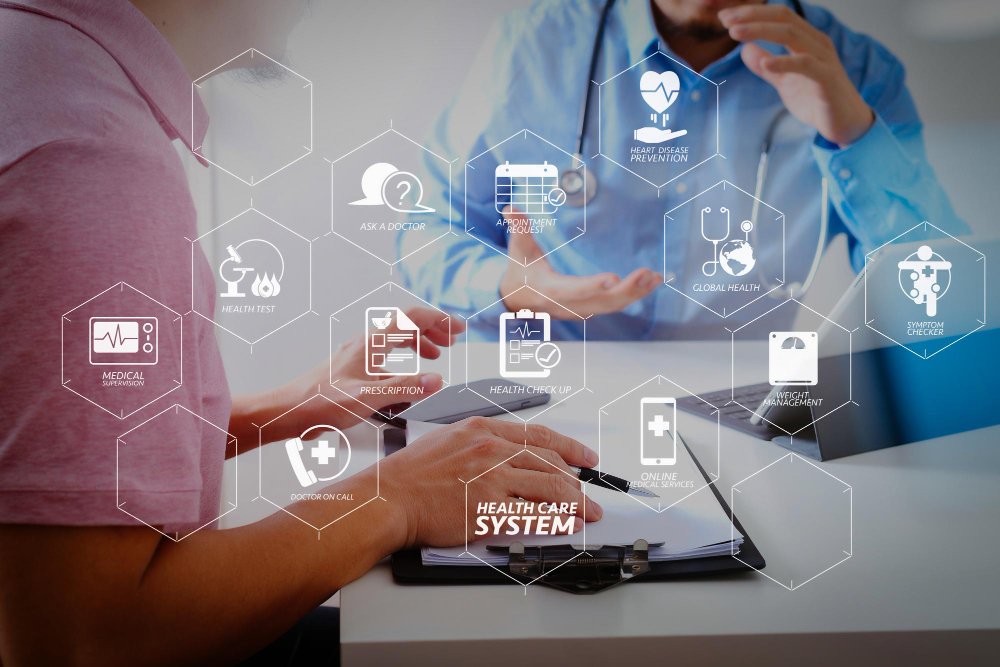Imagine a World Where Healthcare is Accessible to Everyone – Anytime, Anywhere
What if you could see a doctor without leaving your home? Get life-saving medicines delivered with a tap on your phone? Or even pay for medical care using cryptocurrency if you don’t have a bank account?
This isn’t science fiction—it’s happening right now, thanks to the digital revolution in healthcare.
For millions of people around the world, healthcare is still too expensive, too slow, or simply out of reach. But with telemedicine, AI diagnostics, blockchain records, and digital payments, technology is breaking down barriers and making healthcare more inclusive than ever before

In this article, we’ll explore:
✅ How digital tools are fixing healthcare’s biggest problems
✅ Real-world examples of tech making medicine more accessible
✅ The role of fintech (like Visa and Wirex) in health payments
✅ What the future holds for inclusive digital healthcare
Let’s dive in!
1. The Problem: Why Healthcare is Still Not Inclusive
Before we look at solutions, let’s understand the biggest challenges in global healthcare today:
A. High Costs & Financial Barriers
- Millions skip doctor visits because they can’t afford them.
- Unbanked populations struggle to pay for medical services.
B. Lack of Access in Rural Areas
- 65% of people in developing countries live far from hospitals.
- Specialist care is often only available in big cities.
C. Slow & Inefficient Systems
- Paper records get lost.
- Patients wait months for test results.
- Fraud and billing errors drain resources.
D. Language & Disability Barriers
- Non-English speakers struggle to get care.
- Few clinics support sign language or Braille.
The good news? Digital technology is solving all of these problems.
2. How Digital Healthcare is Changing the Game
A. Telemedicine: Doctors in Your Pocket
What it is: Virtual doctor visits via smartphone.
How it helps:
✔ Saves time & money – No travel needed.
✔ 24/7 access – Chat with doctors anytime.
✔ Reaches remote areas – Farmers in Kenya use apps like MyDawa for prescriptions.
Example: In India, Practo lets patients video-call specialists for $5.
B. AI & Machine Learning: Faster, Smarter Diagnoses
What it does: AI analyzes symptoms faster than humans.
How it helps:
✔ Catches diseases early – AI scans X-rays for tumors.
✔ Supports rural clinics – Apps like Ada Health help nurses diagnose without specialists.
Example: Google’s DeepMind detects eye diseases with 94% accuracy.
C. Blockchain: Secure, Portable Medical Records
What it does: Stores health data on unhackable digital ledgers.
How it helps:
✔ No lost paperwork – Your records follow you anywhere.
✔ Prevents fraud – Smart contracts ensure correct billing.
Example: Estonia uses blockchain for 99% of its health records.
D. Fintech & Digital Payments: Healthcare for the Unbanked
What it does: Lets people pay without credit cards or banks.
How it helps:
✔ Crypto health payments – Apps like Wirex enable Bitcoin payments for clinics.
✔ Micro-insurance – Kenya’s M-Tiba lets users save small amounts for care.
Example: In Venezuela, hospitals accept crypto donations amid hyperinflation.
3. Real-World Success Stories
A. Africa: Mobile Clinics + Telehealth
- Problem: 1 doctor per 5,000 people in rural Kenya.
- Solution: M-Tiba connects patients to doctors via SMS.
- Result: 4 million+ people treated remotely.
B. India: AI for Early Cancer Detection
- Problem: Long waits for cancer scans.
- Solution: Qure.ai uses AI to read CT scans in minutes.
- Result: 50% faster diagnoses in Mumbai hospitals.
C. USA: Crypto for Medical Bills
- Problem: 50 million Americans avoid care due to costs.
- Solution: Some clinics now accept Bitcoin via Visa crypto cards (like Wirex).
- Result: Unbanked patients can pay securely.
4. The Future: What’s Next for Inclusive Healthcare?
By 2030, experts predict:
🔮 AI doctors will handle 30% of diagnoses.
🔮 Blockchain IDs will replace insurance cards.
🔮 Crypto payments will be standard in global health.
Biggest opportunities:
✔ VR therapy for mental health.
✔ 3D-printed medicines in remote villages.
✔ Neuralink-style implants for disability support.
5. Challenges to Overcome
While digital healthcare is growing, we still face:
⚠ Internet gaps – 3 billion people lack web access.
⚠ Regulation hurdles – Laws lag behind tech.
⚠ Privacy risks – Data leaks must be prevented.
The solution? Governments and tech firms must work together.
6. How You Can Benefit Today
Want to try inclusive digital healthcare? Here’s how:
- Download a telemedicine app like Teladoc.
- Use AI symptom checkers like Ada.
- Explore crypto health payments with a Wirex Visa card.
Conclusion: Health For All is Finally Possible

The digital revolution isn’t just about fancy gadgets—it’s about giving every human being access to healthcare, no matter where they live or how much money they have.
From AI doctors to Bitcoin hospitals, technology is tearing down barriers faster than ever. The future of medicine isn’t just high-tech—it’s fair, inclusive, and available to all.
What do you think? Will you try digital healthcare tools? Let us know in the comments!
